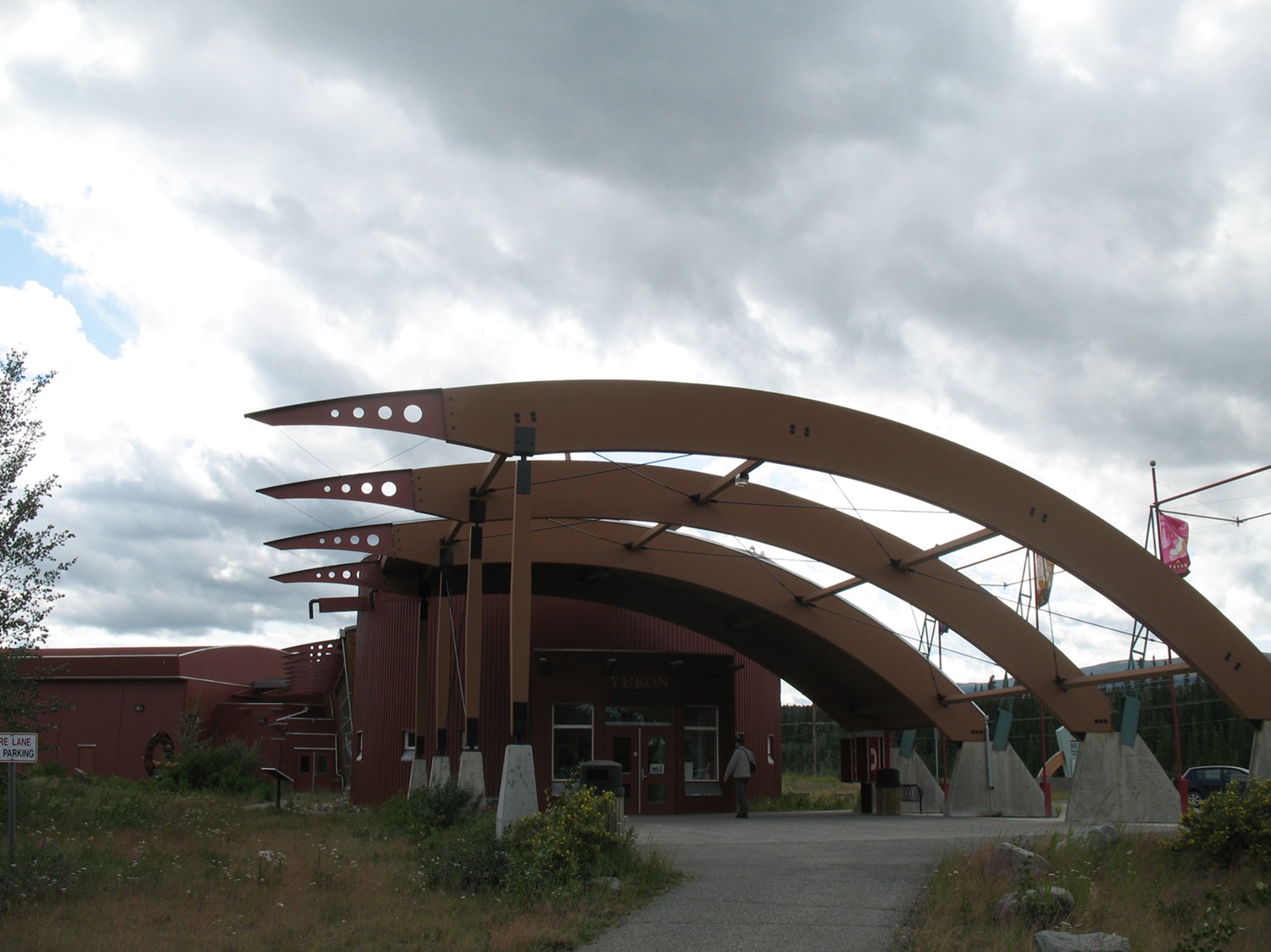The Yukon Beringia Interpretive Centre in Whitehorse, Yukon, aims to provide visitors with a window into the Yukon’s past. With dioramas, skeletons and replicas, the centre immerses visitors into the natural history of the subcontinent of Beringia. The centre also aims to highlight the history and knowledge of the First Nations in the region and provides programs for local community-building.

Description
Having opened in 1997, Yukon Beringia Interpretive Centre takes visitors back some 24,000 years to Beringia, the land bridge that joined Asia and North America during the last, Wisconsinan Ice Age (see Glaciation). The centre includes models, skeletal remains and dioramas of ice-age megafauna, including woolly mammoths, giant beavers and the steppe bison. It also includes information on the people who lived in Beringia and hunted these long-extinct animals. An important feature of the centre is its use of stories and other material gathered from Yukon First Nations in relation to their traditions of Beringia and their long association with the land and its resources. The centre also contains an auditorium, allowing it to provide several programs and services to the local community.
When it was first built in 1992, the architecture of the building that now houses the Yukon Beringia Interpretive Centre was highly controversial. The building was redesigned in 1996 when it was to be converted from the Yukon Visitors Reception Centre to the Yukon Beringia Interpretive Centre, resulting in a more favoured design.
Owned and operated by the government of Yukon, the Yukon Beringia Interpretive Centre is the only museum in Canada that focuses on the last great Ice Age. Since its opening, the centre has received over 350,000 visitors.

 Share on Facebook
Share on Facebook Share on X
Share on X Share by Email
Share by Email Share on Google Classroom
Share on Google Classroom

